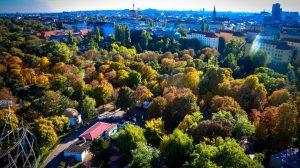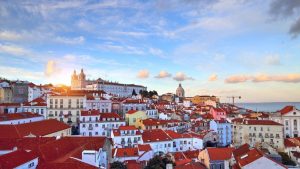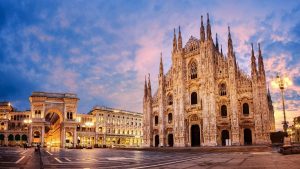
Lisbon is famous for its stunning vistas over the Tagus River and record-breaking structures.
But did you know how the name of the Portuguese capital originated?
Or what natural disaster almost wiped out the city?
Below, you’ll discover 33 cool and interesting facts about Lisbon.
From the fun trivia that will put a smile on your face to the most peculiar details, every Lisbon fact on this list will make you want to visit the city.
Ready to explore? Let’s go!
✅ Note: This article contains affiliate links. In case you purchase something through one of these links, we may receive a small commission at no extra cost to you. Thank you for helping us keep creating the free content on this website!
Facts About the Stunning Landmarks of Lisbon

The Portuguese capital enchants with its spectacular landmarks. Let’s discover the most interesting facts about Lisbon’s popular attractions, which make the city worth visiting.
- The massive Sanctuary of Christ the King was inspired by Rio de Janeiro’s Christ the Redeemer. Similar to the Brazilian structure, the Portuguese Christ the King overlooks the city of Lisbon. The imposing monument faces the left bank of the Tagus River from a hill in the Almada District. A gigantic pedestal supports the 92 ft. (28 m) tall figure of Christ. Enjoy sweeping views of Lisbon, the Tagus River, and the 25 de Abril Bridge by visiting the observation deck at the base of the statue.
- The Monument of the Discoveries commemorates the explorations of the Portuguese sailors. You can’t miss the impressive landmark on the north bank of the Tagus River. The 171-ft. (52-m) tall Padrão dos Descobrimentos looks like the bow of a caravel. The figure of Henry the Navigator stands proudly on its edge. Alongside him, you can also see 33 prominent figures from the Age of Discovery. Among them are monarchs, scientists, explorers, cartographers, artists, and missionaries.
- Belém Tower served as a ceremonial gate and a state prison. Built in the 16th century, it’s also known as the Tower of Saint Vincent. The medieval fortified tower occupies a small island in the Tagus River. The structure not only served as a ceremonial gateway to Lisbon but also as a state prison for political opponents of the monarchy. Nowadays, you can marvel at the jaw-dropping views of the river estuary from Belém Tower’s rooftop terrace.
- Stunning mosaics cover the most famous pedestrian street of Lisbon. The Rua Augusta Arch marks the beginning of the main pedestrian avenue in Lisbon – Rua Augusta. The street stretches for about half a mile. Radiant mosaics with complex geometrical patterns cover the pavement. Pastry shops, cozy cafés, chic restaurants, and exquisite boutiques line the sides of Rua Augusta. The best vantage point to admire the mosaics is from the top of the arch. You can climb it for a small fee and enjoy fantastic views of the city center.
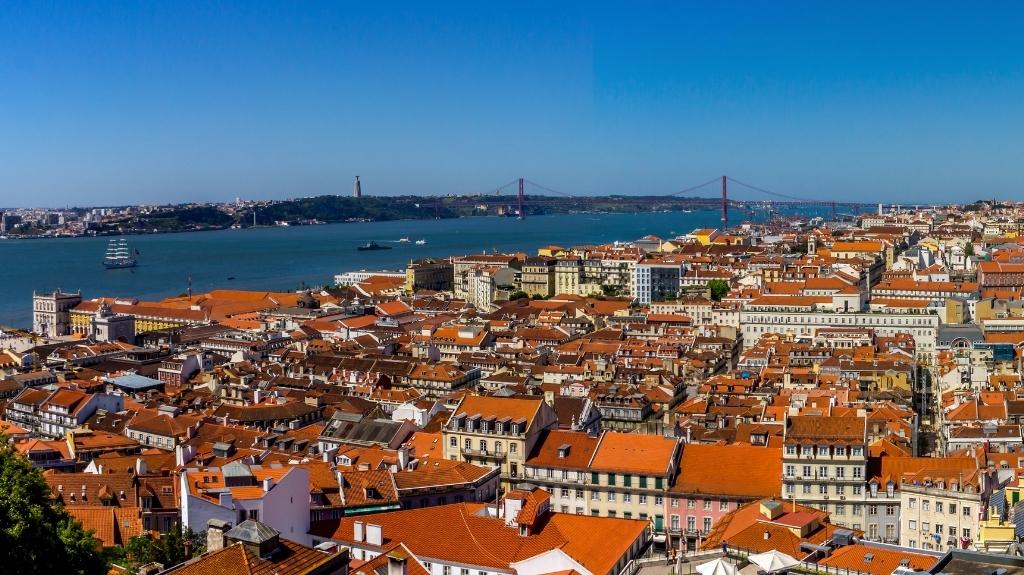
- The best views of Lisbon are from Castelo de São Jorge. Lisbon prides itself on magnificent vistas. Since the Portuguese capital occupies eight hills, you can bet it offers multiple viewpoints. However, we believe the 11th-century São Jorge Castle reveals the most stunning panoramas. From the striking Moorish fortress, you can marvel at the historic center of Lisbon and the Tagus River. Other incredible viewpoints you might also want to check include Miradouro das Portas do Sol and Miradouro de Santa Luzia.
- Jerónimos Monastery hosts two of the most interesting museums in Lisbon. You’ll find Hieronymites Monastery, a UNESCO World Heritage Site, in the Belém District. The complex is a stunning building and a masterpiece of 16th-century architecture. The monastery’s wings host the Maritime Museum and the National Archaeology Museum. The former features displays on the history of navigation in Portugal, while the latter has one of the most important collections of artifacts from the Iberian Peninsula.
- Oceanário de Lisboa houses the largest water tank in Europe. The Lisbon Oceanarium is a modern aquarium for ocean creatures. You’ll find the incredible structure on the waterfront, on the exhibition grounds of Expo 1998. You can’t miss the impressive edifice – it resembles an airplane landed on a dock in an artificial lake. Inside the oceanarium, you can observe approximately 100 species from all over the world, including fearless sharks, gracious mantas, colorful tropical fish, curious penguins, and a rare gigantic sunfish. The aquarium’s main tank holds 5 million liters (1.32 million gallons) of water, making it the biggest in Europe.
- Ponte Vasco da Gama is the second-longest bridge in Europe. Viaducts flank the impressive 7.67-mi (12.35-km) long cable-stayed construction. It spans the Tagus River and has six lanes, where you can drive at speeds of 60-75 mph (100-120 km/h). Building of the bridge began in 1995. The inauguration was just in time for Expo 98, which celebrated the 500th anniversary of Vasco da Gama’s discovery of the sea route from Europe to India.
- Lisbon has its own version of the Golden Gate Bridge. The striking Ponte 25 de Abril is a suspension bridge over the Tagus River, which spans more than 1.4 mi (2.3 km). The impressive red structure is often compared to the Golden Gate Bridge in San Francisco. The 25 de Abril Bridge connects the historic center of Lisbon with the Almada District. Note that it’s illegal to cross the bridge on foot! Take a tram or a bus to reach the other side.
Historical Facts About Lisbon That Will Astonish You
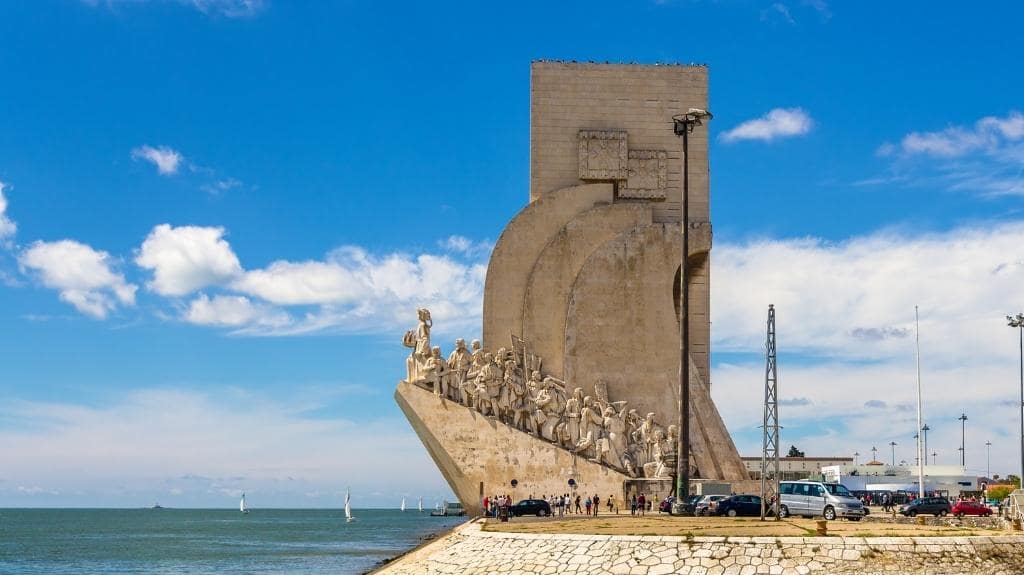
The city’s history spans tens of centuries. You’ll find the most peculiar historical facts about Lisbon in the following section.
- According to legend, Ulysses founded Lisbon. The hero of Homer’s Odyssey supposedly founded the settlement, which he then called Olisipo or Ulyssipo. The current name of the Portuguese capital is a modification of this ancient name. Most likely, however, the actual founders of Lisbon were Phoenician colonists. They established a trading station around 1200 BC. The story that the city’s ancient name may be derived from the Phoenician alis ubbo (“safe harbor”) supports this version as well.
- The importance of Lisbon in European history is due to its location. The history of the city is tightly bound to its strategic position at the mouth of the Tagus River, the longest on the Iberian Peninsula. The large, naturally protected harbor has always served as an important trade port between the Mediterranean, Northern Europe, Africa, and the Americas. Nowadays, docks, wharves, and dry-dock facilities accommodating some of the largest oil tankers in the world line Lisbon’s waterfront.
- The Age of Discovery started in Lisbon. Also known as the Age of Exploration, it refers to the period between the 15th and the 17th century in European history. During this time, the Portuguese pioneered the exploration and colonization of the Americas, Asia, and Africa. Lisbon flourished, becoming the center of a vast empire. The Monument of the Discoveries in the capital city commemorates the Portuguese maritime explorations. You can admire the impressive landmark on the north bank of the Tagus River.
- One of the most powerful earthquakes ever recorded destroyed two-thirds of Lisbon. The 1755 Lisbon earthquake was devastating for the Portuguese capital and the nearby regions. The shockwaves traveled through the Iberian Peninsula and Northwest Africa. The disaster shook the society, economy, and religion of the country. Politicians used it to overthrow the aristocrats, while the aftermath of the earthquake has estimated a loss of roughly 50% of Portugal’s GDP.
- One of the most influential rulers in European history was born in Lisbon. Hardly any other person in human history has accumulated more titles and power than the Lisbon-born Isabella of Portugal. She ruled at the beginning of the 16th century. At age 23, Isabella became Queen Consort of Spain and Germany, and Lady of the Netherlands. At 27, she was already Holy Roman Empress and Queen Consort of Italy. During her husband’s constant absences, she was the actual regent of Spain. For years to come, her exceptional diplomatic skills secured alliances with the neighboring kingdoms.
- The music style fado originates from Lisbon and the region. When in Lisbon, you have to experience the most popular music in the country. Fado literally means “fate”. Museu do Fado is the best place to learn about its history. But to truly dive into the unique melody and singing, visit one of the countless locales featuring live performances. The most popular fado establishments in Lisbon include Fado & Wine, Sr. Fado, and Duque da Rua. Alternatively, we recommend booking the fantastic show “Fado in Chiado”.
- Lisbon has to thank one man for the city’s historical importance. In 1498, the famous sea explorer Vasco da Gama concluded his first voyage to India around the Cape of Good Hope. Linking Europe and Asia via an ocean route marked the beginning of sea-based global colonization. Da Gama’s discovery of the sea route connecting Europe and India gave the Portuguese access to invaluable resources. This broke the Venetian monopoly on Oriental trade and skyrocketed Portugal’s economy.
Fun Facts About Lisbon That Will Put a Smile on Your Face
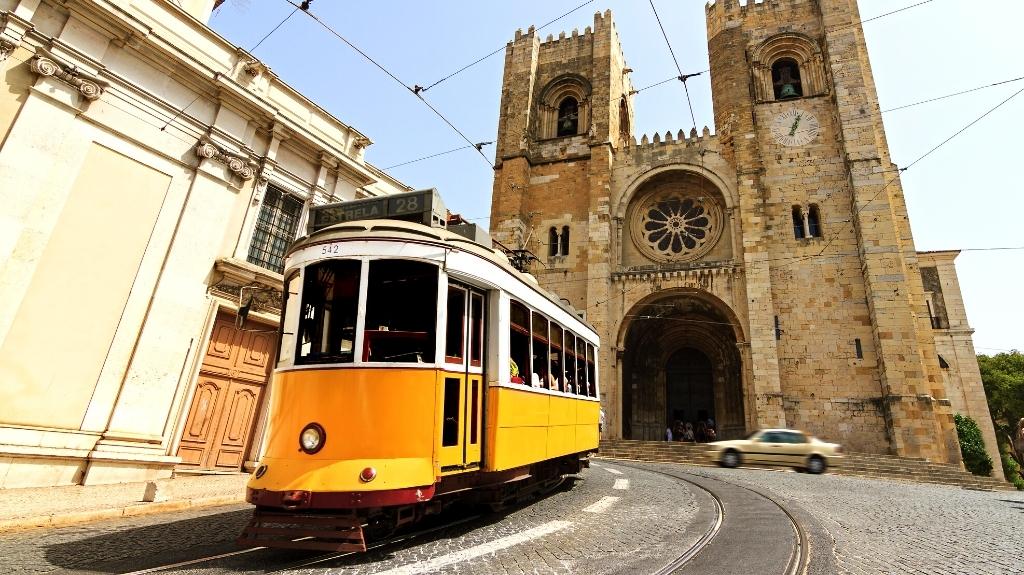
Now, we’ve come to the most fun part of this article. Below, you can explore the facts about Lisbon’s funky side. Ready for some laughs?
- A church in Lisbon has become the Portuguese synonym for endless construction. The groundbreaking of the Church of Santa Engrácia happened in 1681. Works continued normally until 1712 when the main architect passed away. The ruling King John V soon lost interest in the project and abandoned it. The church was not completed until 1966. Although construction lasted for about 285 years, it’s still nothing compared to the 579 years it took to finish Il Duomo in Milan.
- The coat of arms of Lisbon depicts two crows facing each other. They’re standing on the bow and stern of a ship. The image represents the voyage of the relics of Saint Vincent of Saragossa, the patron saint of Lisbon. Legends say that after he was martyred, ravens protected his body from the wild animals until his followers could recover it and bring it back to Lisbon. Today, you can find the symbol everywhere in the city – on street poles, manhole covers, and lanterns. Of course, the statue of St. Vincent in the city also holds a depiction of the coat of arms of Lisbon.
- One-fourth of Portugal’s population lives in Lisbon’s metropolitan area. An even more peculiar fact is that the proper occupies just 3% of the country’s total area. Lisbon’s cosmopolitan and international feel is due to the migration from the country’s rural areas, the return of Portuguese citizens from the African colonies, and immigrants from Cape Verde, Brazil, Angola, and Guinea-Bissau, as well as various European and South Asian countries. The vibrant mix of cultures and ethnicities contributes greatly to the funky vibe of the Portuguese capital.
- The most iconic public transportation in Lisbon is E28. Six tramlines crisscross the city center and the western part of Lisbon. Most of them have been operating since 1914. Line 28 is the most popular with tourists as you can visit the majority of the Portuguese capital’s attractions with it. The small, yellow streetcar climbs the steep hills of the capital city and takes sharp turns with ease. When it approaches the Lisbon Cathedral, for a moment, you might fear it’ll drive straight through its gates. At the last second, the tram will swerve and avoid a collision.
- One of the coolest ways to explore Lisbon is by tuk-tuk. You wouldn’t expect to find the little vehicles outside South-East Asia. However, they’re a great match for the winding, narrow, cobbled streets of Lisbon. You’ll see tuk-tuks parked at every corner of the historic center, waiting to take you on an exhilarating adventure around tight corners and steep hills. One of our best Lisbon travel tips is to call one in advance and navigate the alleys of the Portuguese capital in a unique way. Usually, you book them by the hour, and the driver acts as your tour guide.
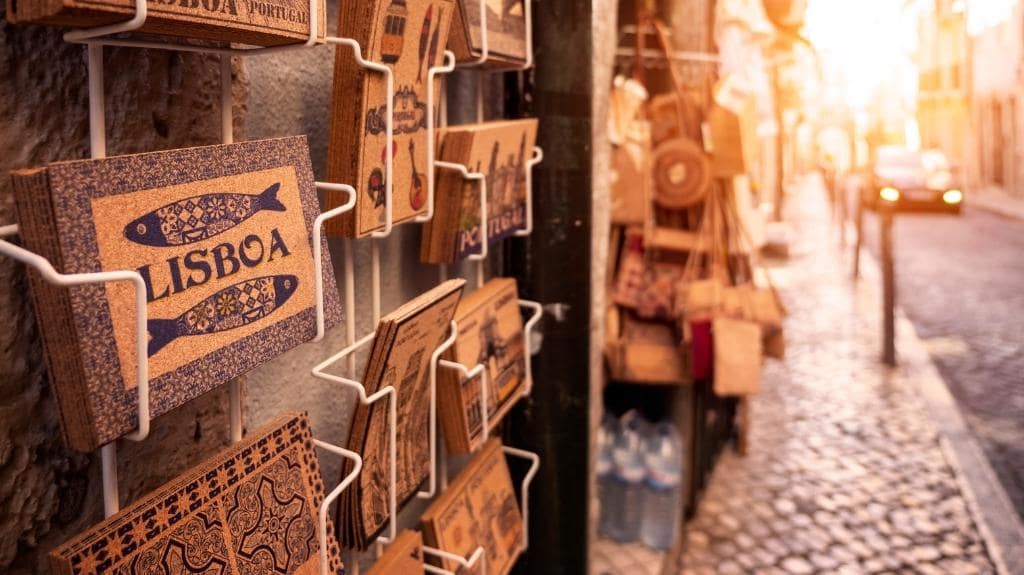
- Lisbon attracts with its mild climate and non-stop sunshine. The city’s mean annual temperature is in the low 60s F (~17 °C). The proximity of the Atlantic Ocean and the Gulf Stream has a huge effect on the city’s climate. Even in the coldest month, January, the average temperatures don’t drop below 54 °F (12 °C). In the hottest month, August, you’ll rarely experience temperatures above 82 °F (28 °C). On top of that, you can enjoy at least five hours of sunshine even in the winter months!
- If you’re looking for unique goods in Lisbon, explore the countless cork-selling shops. Around 50% of the world’s cork production comes from Portugal. The versatile, natural material is harvested from the bark of a species of oak. Apart from stoppers for wine bottles, cork has many uses. Lisbon is known for its funky souvenir shops and boutiques selling goods made of the high-quality material. Cork is light and waterproof, and it’s an excellent insulator. You’ll have a hard time deciding between buying a fashionable handbag, a funky wallet, an extravagant belt, a trendy jacket, or a piece of jewelry made of cork.
- You can visit the Portuguese Riviera from Lisbon. The western neighborhoods of Lisbon’s metro area touch the Atlantic Ocean. You can easily do a day trip from the capital’s center to the beach. At the Portuguese Riviera, check out the sand stretches of Praia da Crismina or Praia do Guincho. The latter is not only famous among surfers, kitesurfers, and windsurfers. It also appeared in a James Bond movie. At the Portuguese Riviera, you can visit the dramatic cliffs of Cabo da Roca, the westernmost point of Continental Europe, too.
- Azulejos in vibrant colors cover many houses, walls, and metro stations in Lisbon. Walking around Lisbon, you’ll encounter countless buildings covered in richly painted ceramic tiles. Called azulejos in Portuguese, you can see those decorating murals, townhouses, and metro stations. Azulejos usually form an image, telling an enchanting story. The themes range from biblical tales through epic adventures to a family’s history. If you’re interested in learning more about this art form, visit Museu Nacional do Azulejo. And if you want to explore the most popular and well-preserved buildings featuring azulejos, go to Fronteira Palace, the Monastery of São Vicente de Fora, or Jardim da Quinta dos Azulejos.
- You can attend bullfights in Lisbon. The Portuguese version of this spectacle is not as violent as the Spanish one and hasn’t been banned yet. The bullfighting season continues from Easter to late summer. The fights are held at the city’s historic redbrick bullring, Campo Pequeno. The imposing ring features Moorish arches and cupolas. It reopened in 2006 after a major renovation, during which a shopping mall, a cinema, a supermarket, and several restaurants were added.
The Most Scrumptious Culinary Facts About Lisbon

Devouring copious amounts of delectable local dishes and traditional drinks should be on every traveler’s list. To better understand the Portuguese capital, we’ve gathered the best food facts about Lisbon. And you can put your knowledge to the test while learning even more about the culinary scene in the city by joining this food & wine walking tour.
- The recipe for the delectable Pastéis de Nata is a rigorously kept secret. You’ll find the egg-cream deliciousness in every café, bakery, and pastry shop in Portugal. Naddya’s favorite custard tarts are creamy on the inside and crunchy on the outside. Some versions feature apples or other fruits in the filling. The recipe is one of the most strictly kept secrets in the country. In Lisbon, the most popular places to try the heavenly pastries are Fábrica da Nata, Alfama Doce, and Manteigaria.
- The staple Lisboan sandwich is to die for. The typical bifana features thinly sliced pork meat, a hearty bread roll, and a splash of sauce. The delicate meat is slowly cooked for hours in white wine, garlic, and herbs. The result will skyrocket your taste buds into culinary heaven. Many restaurants in Lisbon advertise to have the best bifana, but our recommendation is Bifanas do Afonso. Foodgasms are guaranteed.
- If you’re a meat lover, you’ve got to try chouriço. The traditional smoked sausage epitomizes pork, fat, paprika, garlic, and spices. Cumin, cinnamon, white pepper, and piri piri peppers add an extra kick of flavors. You can eat chouriço on its own or in a stew, but we recommend ordering chouriço assado. Why? Because it’ll be prepared directly on your table, in a burning clay pot over an alcohol flame!
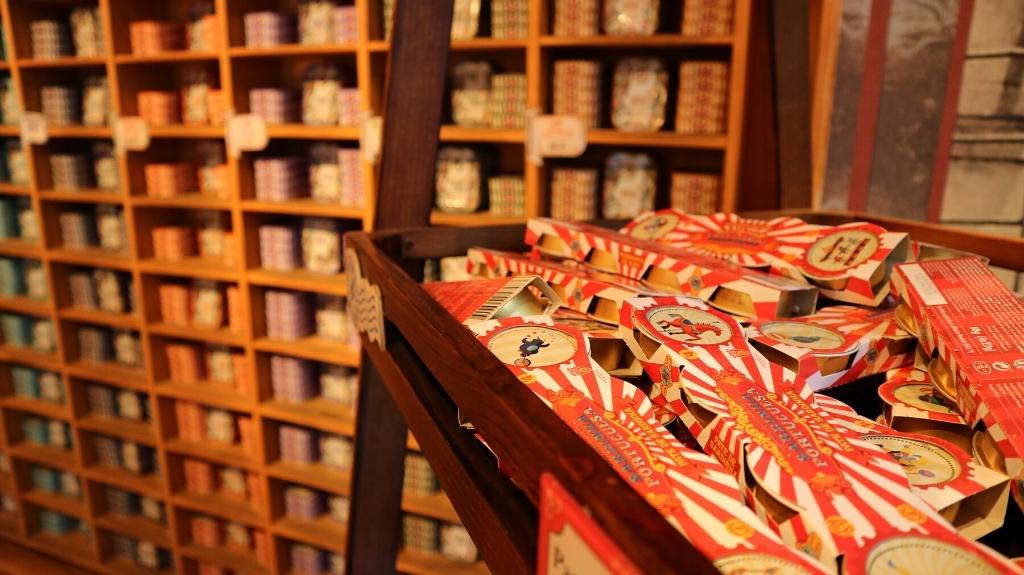
- Portuguese are obsessed with sardines. Ordering sardinhas in Lisbon is a must. Grilled or canned, you should try them at least once. Around the city, you’ll encounter many stores selling vibrant tinned sardines. Expect to pay as much as a hundred dollars for the most exquisite ones! If you’re looking for a signature souvenir to bring back from Lisbon, check out the family-owned Conserveira de Lisboa and The Fantastic World Of Portuguese Sardines for their huge variety of tinned sardines.
- No other nation is crazier about codfish than the Portuguese. How else can we explain the fact that there are 365 different ways to prepare bacalhau – one for each day of the year? The earliest recipes stem from the Age of Discovery. The Portuguese explorers needed food that would last throughout the long journeys. Dried and salted codfish was the perfect ingredient. Nowadays, you’ll find codfish prepared in endless manners. When in Lisbon, we recommend trying bacalhau à brás and pataniscas de bacalhau. Both dishes will make you lick your fingers.
- Specialty bars in Lisbon serve a unique type of alcohol. The popular Portuguese ginjinha is made of ginja berries infused with alcohol. The berries are a sour cherry variety and join forces with sugar, cloves, and cinnamon to turn into this fragrant staple drink. In Lisbon, you can order it in specialty bars. Check out the vibrant Ginjinha Sem Rival, the historic To Ginjinha, and the quirky Ginjinha das Gáveas.
- Lisbon is the heart and soul of Portuguese winemaking. The region produces large quantities of simple yet delicious white, red, and rose wines. In certain areas, you’ll also find wineries, which make brandy and vinho leve. Vinho leve literary means “light wine”. It’s a young wine consumed as an aperitif and popular for its balanced acidity and low alcohol content. To learn more about the wines of Lisbon and satisfy your palate, we suggest visiting this wine cellar and vineyard on a day trip.
What’s Your Favorite Fact About Lisbon?
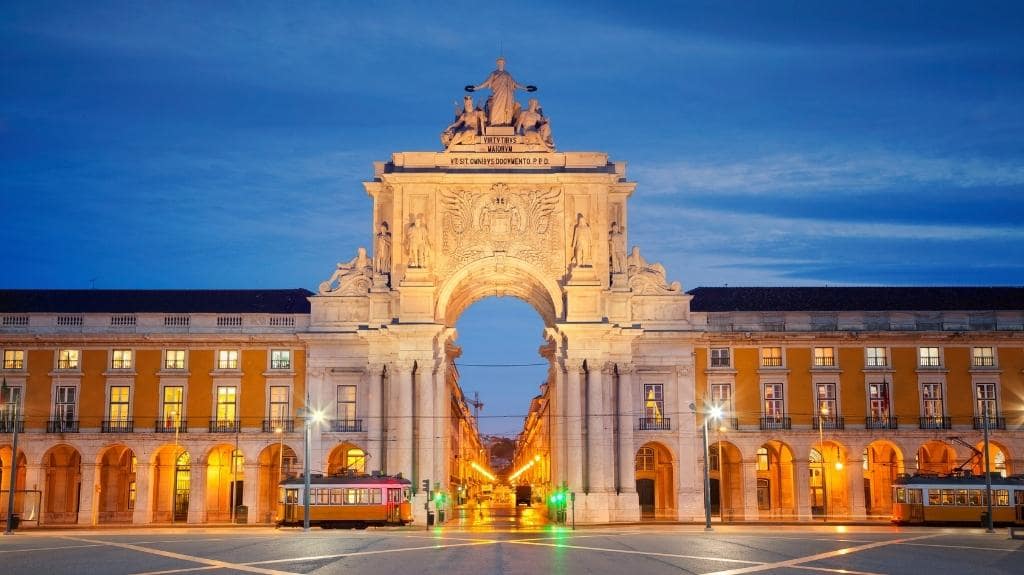
This wraps up our list with 33 cool and interesting facts about Lisbon.
From its importance throughout world history to the reason for its quirky atmosphere, and from the astonishing attractions to the most mouth-watering meals, we bet you’ll never get bored exploring the Portuguese capital.
Now, before you share this article with all your friends, we’d like to know:
How many of these facts about Lisbon did you already know?
Which one is your favorite?




